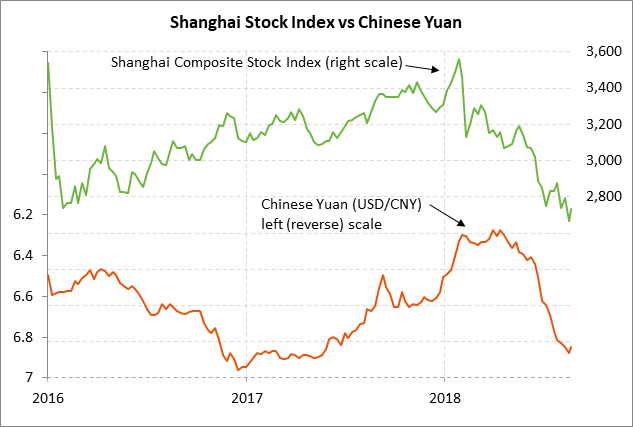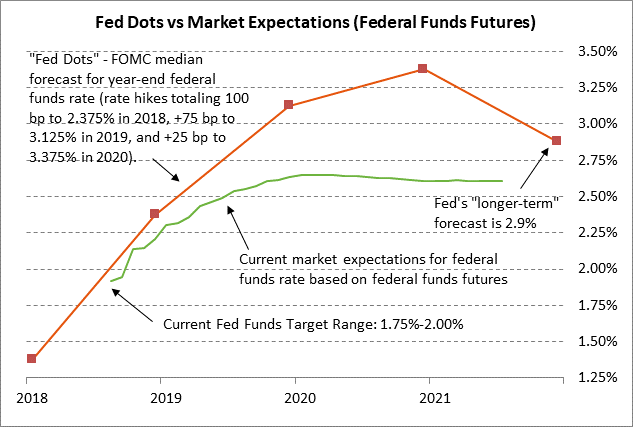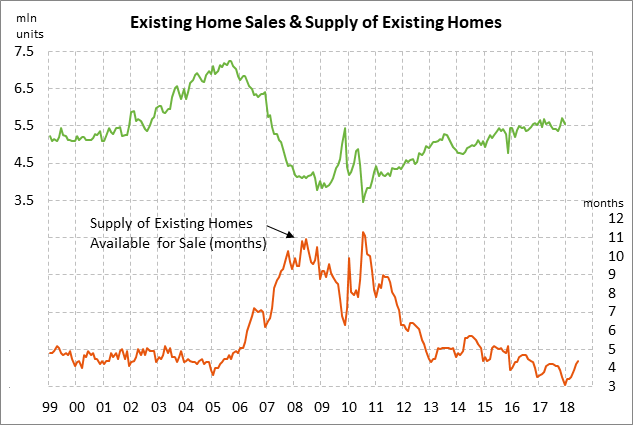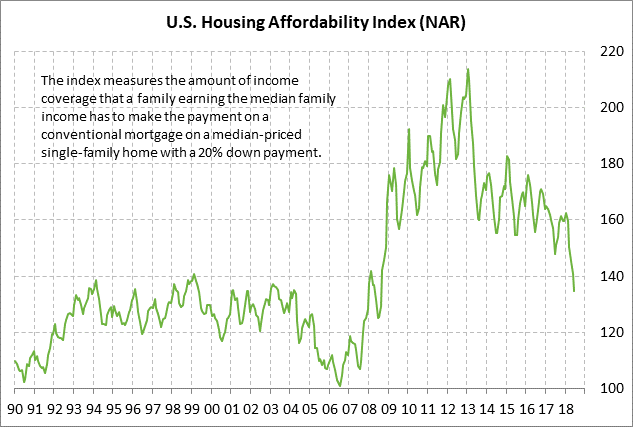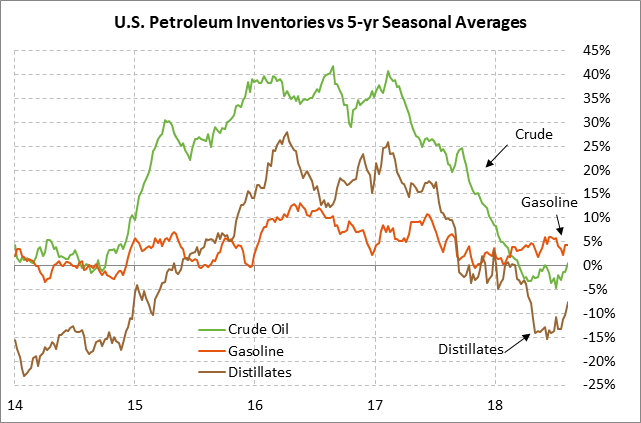- Markets wait to see if Chinese negotiators bring a sufficient concession offer to the trade talks that begin today
- FOMC minutes could provide policy hints
- US existing home sales expected to stabilize after 3-month decline
- Weekly EIA report
Markets wait to see if Chinese negotiators bring a sufficient concession offer to the trade talks that begin today — Two days of mid-level talks in Washington begin today led by China’s Vice Commerce Minister Wang Shouwen and Treasury undersecretary of international affairs David Malpass. The fact that the negotiations are being held only at the mid-level suggest that senior officials are not yet particularly optimistic about the outcome of the talks. If there was more optimism about an agreement, then senior officials would simply hold talks among themselves to finalize an agreement.
Another factor causing some pessimism is that this week’s meetings are being led by Treasury officials, apparently without the participation of trade-hawks U.S. Trade Representative Lighthizer and White House trade advisor Navarro. President Trump’s instincts seem to align more with Lighthizer and Navarro than with Treasury officials, who are more moderate on trade and are more sensitive to the impact of the U.S. trade war on the global economy and financial markets.
In any case, China will have to bring a bigger package of concessions this week than they did last May when President Trump quickly repudiated a framework deal after he received criticism from U.S. trade hawks for agreeing to a preliminary trade deal. The Trump administration is looking for a big package of Chinese concessions before even agreeing to formal negotiations on the details.
The Trump administration has a long list of trade demands on China such as (1) measures to reduce the trade deficit, (2) China’s abandonment of state support for high tech industries as outlined by the “Made in China 2025” program, (3) much stronger Chinese protections for U.S. technology and intellectual property, and (4) an end to a weak-yuan policy to boost China’s exports, among many other demands.
Yet there is still a chance for at least a cease-fire agreement this week. European Commission President Juncker in July successfully talked Mr. Trump into a tariff ceasefire and formal negotiations with only some limited up-front concessions such as a promise to buy more soybeans and LNG. A similar US/Chinese ceasefire could conceivably delay the scheduled implementation tomorrow (Aug 23) of U.S. and Chinese 25% tariffs on another $16 billion of each other’s products. More importantly, a ceasefire could delay the implementation of President Trump’s move to impose the big hammer of 10-25% tariffs on $200 billion of Chinese products sometime after the public comment period ends on Sep 6. Public hearings on that batch of tariffs are being held all this week.
WSJ late last week carried an article entitled “US, China plot road map to resolve trade dispute by November.” The article cast this week’s mid-level talks as a prelude for more extensive talks to try to produce a final agreement before Presidents Trump and Xi attend the Asia-Pacific Economic Cooperation Forum in mid-Nov and the G-20 summit in late-Nov. Therefore, even if this week’s meeting does not produce a breakthrough to avert Thursday’s tariffs on $16 billion of products, the talks may nevertheless lead to more extensive talks in coming weeks.
FOMC minutes could provide policy hints — The Fed today will release the minutes from the last FOMC meeting on July 31/Aug 1. The FOMC at that meeting left interest rates unchanged, taking a pause after the +25 bp rate hike to 1.75%/2.00% at the previous meeting on June 12-13.
Even though the July 31/Aug 1 FOMC meeting didn’t produce any policy changes, the markets will nevertheless carefully study the minutes to see how concerned FOMC members are about trade tensions and whether they still intend to abide by their hawkish Fed-dot forecasts for the funds rate. The markets will also be watching for the outside chance that Fed officials started discussing their ultimate goals for their balance sheet reduction program and their framework for conducting monetary policy in the future (i.e., a corridor or floor type system).
The market is currently discounting a 100% chance of another 25 bp rate hike at the next FOMC meeting on Sep 25-26. The market is then expecting an unchanged policy at the following meeting on Nov 7-8 and then a 77% chance of the fourth rate hike of the year at the Dec 18-19 meeting.
US existing home sales expected to stabilize after 3-month decline — The market consensus is for today’s July existing home sales report to show a small +0.4% increase to 5.40 million, stabilizing after the 3-month decline totaling -4.0% to June’s 9-month low of 5.38 million. Existing home sales have now fallen by a total of -5.9% from last November’s 11-year high of 5.72 million units. U.S. home sales have recently fallen due to the limited supply of homes available for sales and due to resistance by some buyers to high home prices. In addition, the current 30-year mortgage rate of 4.53% is up by +60 bp since late-2017, thus making homes much less affordable. Indeed, the NAR Housing Affordability index in June fell to a 10-year low of 134.8, illustrating that homes are the least affordable in a decade.
Weekly EIA report — The market consensus for today’s weekly EIA report is for a -2.0 mln bbl drop in U.S. crude oil inventories, a -1.0 mln bbl drop in gasoline inventories, and a +1.5 mln bbl rise in distillate inventories. Crude oil inventories are currently +0.6% above the 5-year seasonal average, gasoline inventories are +4.3% above average, and distillate inventories are -7.6% below average. Last week’s U.S. crude oil production level of 10.9 mln bpd was just slightly below July’s record high of 11.0 mln bpd.

